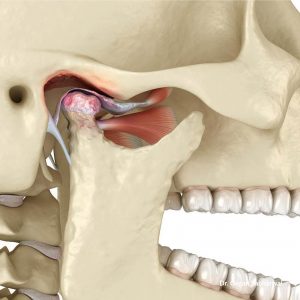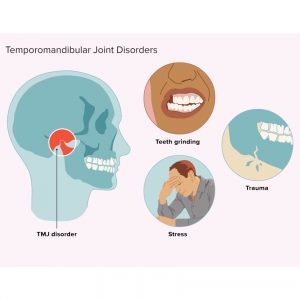
The treatment for severe TMJ should always be navigated by a Temporomandibular Joint Disorder Specialist. Of all the TMJ treatments, TM Joint arthroscopic surgery is an expensive option characterized by minimal invasiveness, effective relief, a rapid recovery time, and a reduction of symptoms by 95 percent of the joints treated after completing the second surgery, which makes it a valuable and popular approach for long-term progress, and it comes highly recommended in this regard.
Benefits of TM Joint Arthroscopic Surgery

- Minimally Invasive: A Temporomandibular Joint Disorder Specialist may recommend arthroscopic surgery as one of the TMJ treatment options for its distinct advantages. This technique involves smaller incisions compared to traditional surgeries, which results in less tissue damage and reduced scarring, thus offering a more appealing solution for patients seeking effective relief from TMJ symptoms with minimal aesthetic impact.
- Reduced Pain and Swelling: TMJ Pain Management is also revolutionized by the decreased invasiveness of several TM Joint Disorder Solutions in the UAE. For example, arthroscopic surgery has resulted in less surgical suffering and inflammation. This not only speeds healing but also alleviates the suffering linked with more invasive procedures, resulting in rapid relief and an outstanding result.
- Faster Recovery: Solutions to the TM Joint Disorder in the UAE, which includes advanced techniques during arthroscopy, are critical aspects of TMJ Pain Management as they use smaller incisions. This leads to faster healing processes, which allow patients to engage in normal activities long before receiving conventional surgery. These advantages all have demonstrated the effectiveness of a thorough approach to managing and eradicating TMJ disorders today.
- Improved Joint Function: TM Joint Disorder Solutions in the UAE play key roles in TMJ Pain Management. More so, surgeries seem to stand out as the most effective interventions that address joint dysfunction and internal derangements. Improved mobility and drastic pain reduction during jaw movement offer a stronger basis for patients to regain comfortable and functional jaw use. As a result, it becomes easier for an affected person to improve their quality of life.
- High Precision: Arthroscopy offers a distinct advantage by providing surgeons with a clear, detailed view of the TM joint. This visibility is crucial, allowing for precise treatment of the affected area. Such accuracy is essential in addressing specific problems within the joint, ensuring targeted interventions that are more likely to result in successful outcomes and improved joint function for patients.
Recovery Process

- Immediate Postoperative Care: In the days immediately after TM Joint arthroscopic surgery, patients should rest and limit movement of their jaws to facilitate proper healing. Ice packs are often prescribed to manage postoperative swelling and discomfort, while certain medications may also be prescribed. The careful management of swelling and pain accelerates the recovery process, enabling a quick and less painful return to normal activities.
- Diet Adjustments: Initially, following TM joint arthroscopic surgery, a soft or liquid diet is often recommended to minimize jaw strain and facilitate healing. As the recovery progresses and the patient’s condition improves, the diet can gradually be adjusted to include more solid foods. This careful dietary management helps ensure that the jaw heals properly while preventing any unnecessary stress or damage during the healing phase.
- Physical Therapy: Healthcare providers may recommend some special exercises to expedite recovery after arthroscopic surgery of the TM joint. These exercises aim to help regain typical jaw movements and rebuild jaw muscles, making it easier to go back to normal activities. These directed exercises are especially important during the rehabilitation process, resulting in a better outcome of the surgery.
- Follow-Up Visits: Regular post-operative check-ups are also necessary to ensure proper healing and functioning of the TM joint after arthroscopy. During these visits to the healthcare facility, the patient’s recovery progress is carefully monitored, and it is also possible to change the treatment regimen if required and diagnose complications at an early stage. Regular outpatient visits are an important aspect of postoperative management of the TMJ problem.
- Long-Term Care: Post-surgery, patients are strongly advised to avoid extreme jaw movements, such as wide yawning or chewing hard foods, for a few weeks to prevent strain on the healing joint. This precaution helps ensure that the surgical site remains stable and undisturbed, facilitating a smoother and faster recovery. Adhering to these guidelines is crucial for achieving optimal outcomes after TM joint arthroscopic surgery.
Conclusion
If you experience some difficulties with TMJ and are looking for prospective treatment officers, arthroscopic surgery may be right for you. Information on the comprehensive procedure plan pre-and postoperative care and detailed guidance can be provided by Dr. Gagan Sabharwal . Do not wait anymore and visit an inexperienced website to help you achieve a life free of pain!